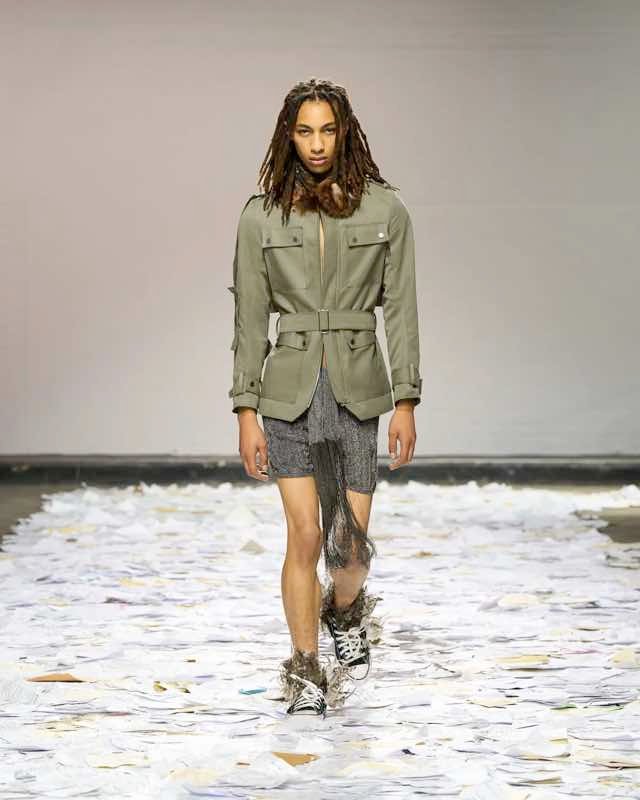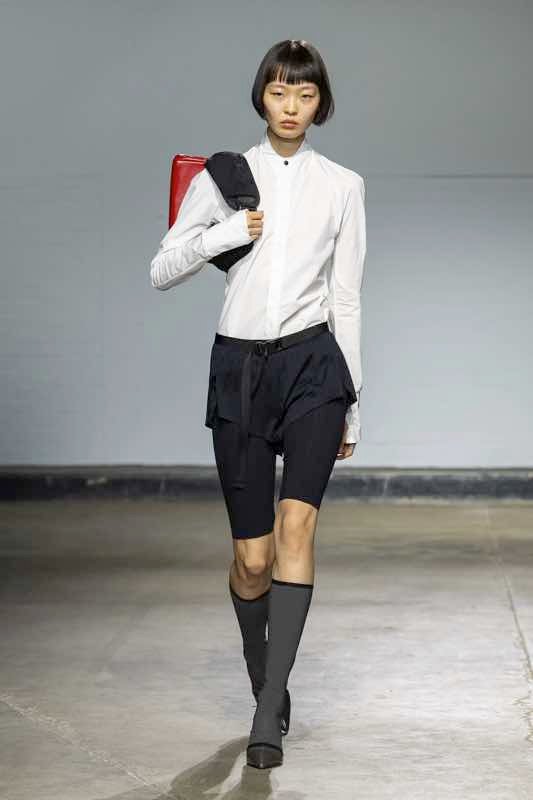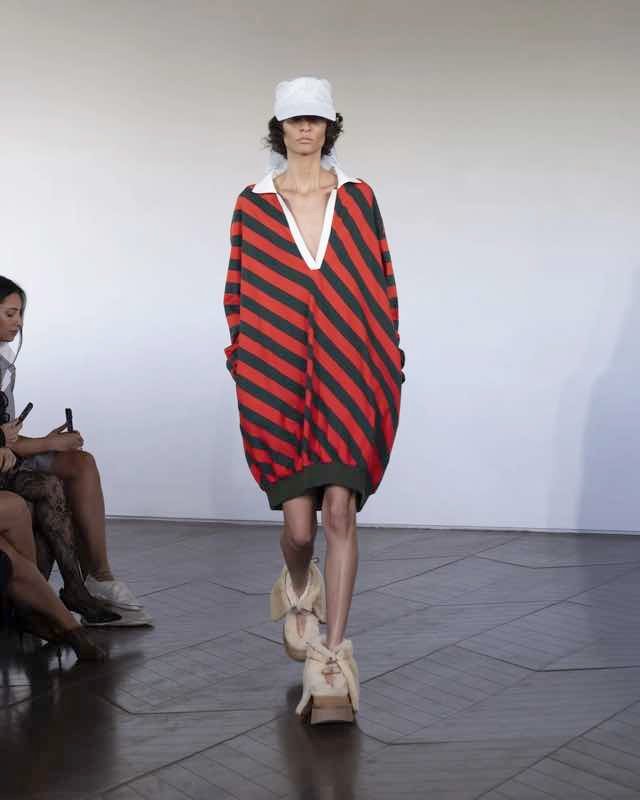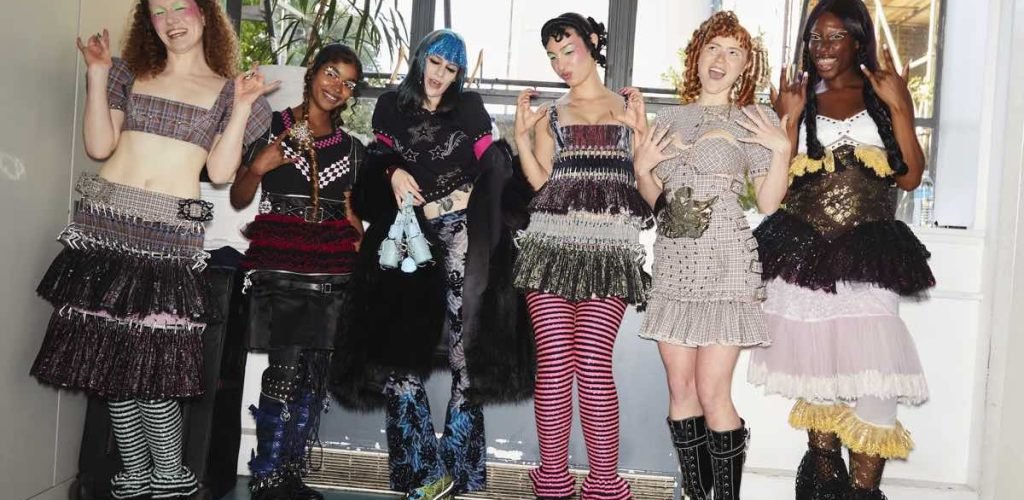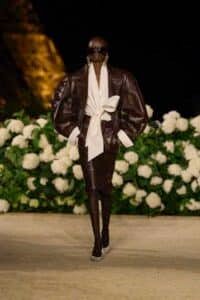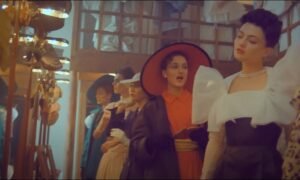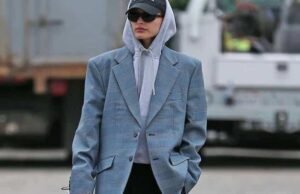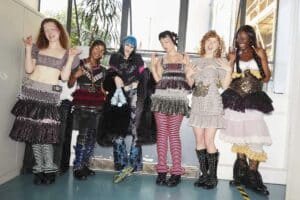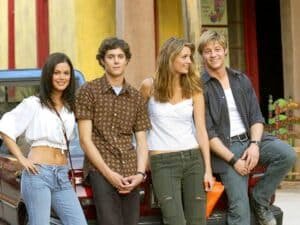London Fashion Week SS26 did not arrive quietly. It came with urgency, new promises, and a clear attempt to reset the British fashion landscape. Laura Weir, the recently appointed CEO of the British Fashion Council, set the tone earlier this summer with her manifesto at the Serpentine: tax breaks for designers showing in London, more scholarships for young talents, and a double invitation program to bring international guests into the city. Her words framed the week: “Fashion is not just clothes. It is the first chapter of society’s next story.”
That statement resonated as the shows unfolded. London once again reminded the world why it has always been the stage where heritage and rebellion coexist. From the grandeur of Burberry at Kensington Palace to the raw chaos of Aaron Esh in a former nightclub, the SS26 season showed a capital that thrives on contrast.
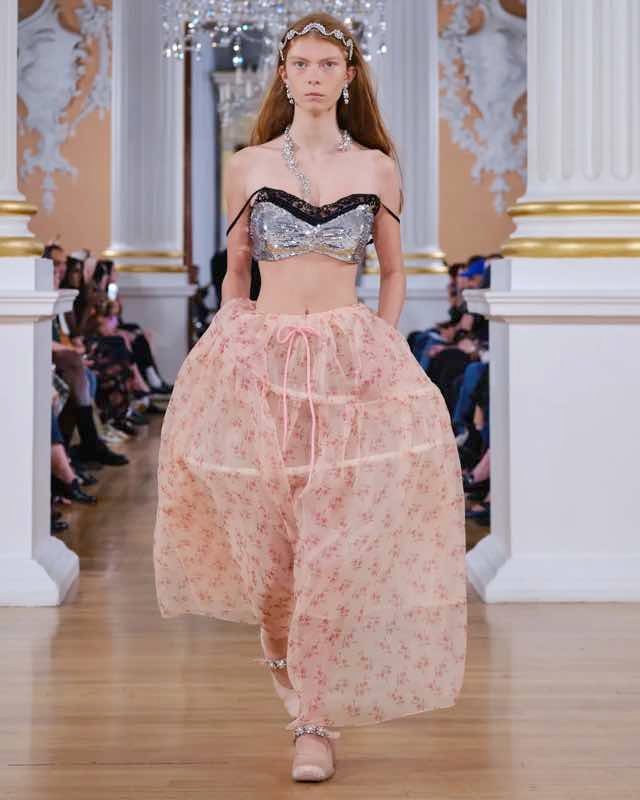
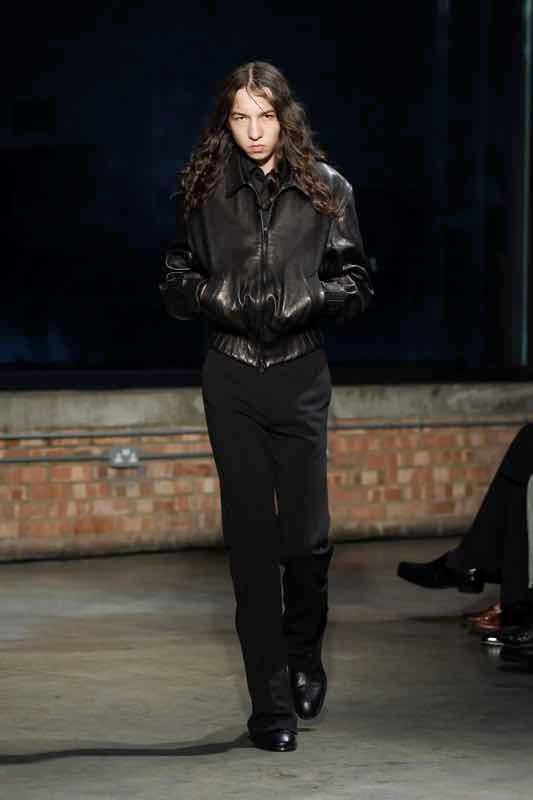
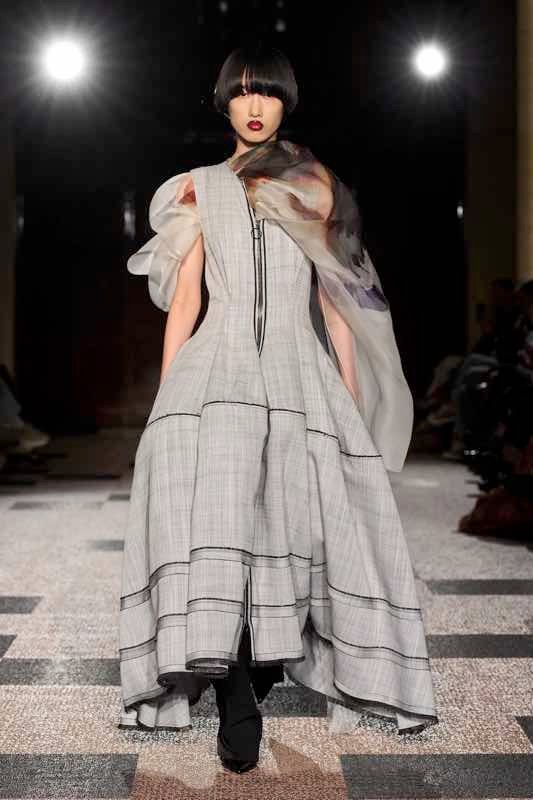
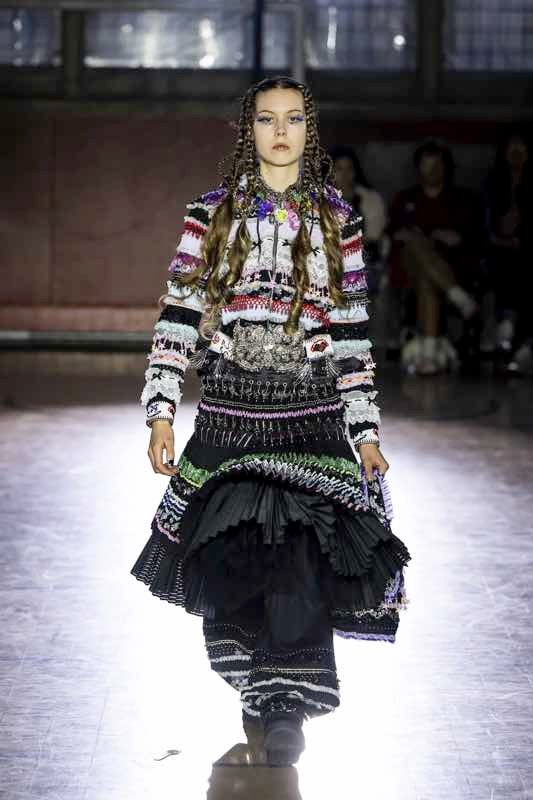
Burberry: the grandeur of a national treasure
The closing act on Monday evening belonged to Burberry, staged at Perks Field, Kensington Palace. The show had the weight of expectation: Burberry is more than a brand; it is Britain’s fashion emblem. The house delivered a spectacle that felt both royal and rebellious. The tailoring was razor-sharp, coats cut like uniforms yet softened with fluid drapes, while accessories nodded to London’s street culture. The crowd, a mix of loyalists and new faces, understood the subtext: Burberry wants to remain Britain’s cultural currency while speaking the global language of modern luxury.
Simone Rocha: teenage rebellion, baroque dreams
Inside Mansion House’s Egyptian Hall, Simone Rocha presented a collection infused with the raw defiance of adolescence. Inspired by Justine Kurland’s early 2000s series Girl Pictures, Rocha’s garments carried the duality of rebellion and vulnerability.
Crinolines were slashed, paired with sequined bras that slipped off shoulders; oversized satin roses bloomed dangerously at the waist; translucent vinyl layers veiled fragile silk dresses. Accessories oscillated between domestic coziness and nightlife sparkle: pillow-shaped clutches, sequined gloves, lips etched with “Sweet Dreams.”
The applause at her final bow reminded us that Rocha, now over a decade into her namesake label, still knows how to jolt the heart.
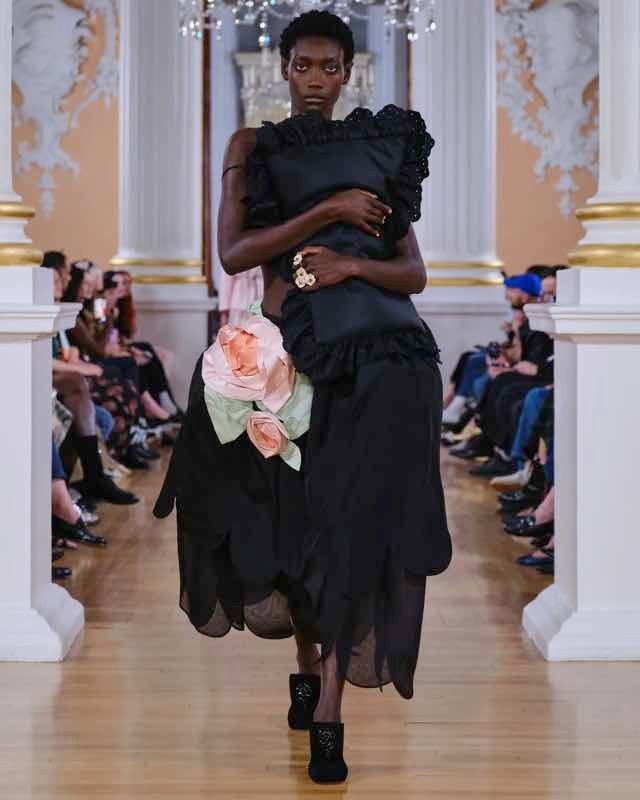
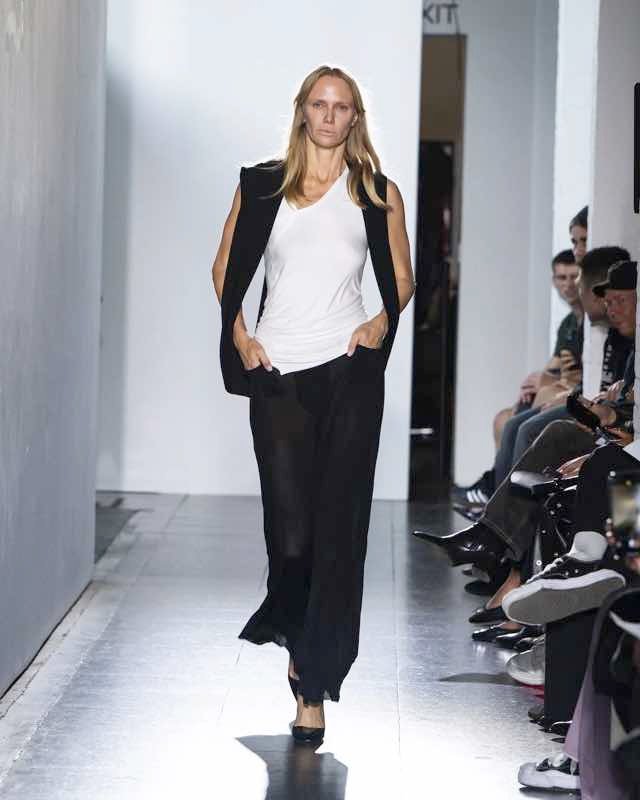
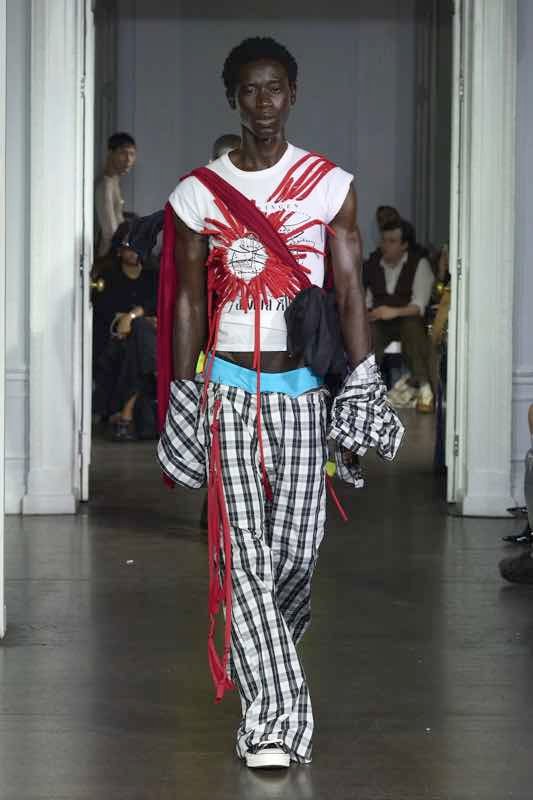
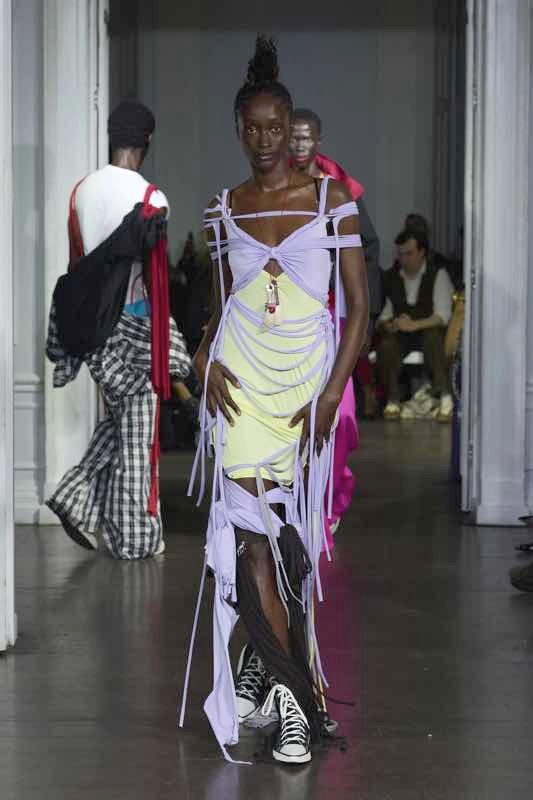
Jawara Alleyne: the morning after the carnival
On Sunday evening, at the ICA, Jawara Alleyne staged a performance rooted in Caribbean culture and the feeling of tabanca—that bittersweet ache after the euphoria of a carnival. Models staggered as if coming home from a night out, wearing celebratory garments slashed, pinned, re-stitched into beautiful disarray.
Deadstock t-shirts honoring Caribbean artist Guy Harvey were spliced with chiffon and denim; jewelry crafted from broken cymbals and guitar strings echoed Alleyne’s love for music and community. Collaborations with Converse and Japanese rock band Bo Ningen added edge. The collection captured the messy poetry of joy fading into dawn—alive, raw, unforgettable.
Johanna Parv: armour for urban women
At 180 The Strand, Johanna Parv continued her meticulous exploration of functional elegance. Her cycling-inflected silhouettes—shorts, track sets, technical dresses—were engineered with hidden hoods, adjustable straps, discreet vents. This season added a breezier feel: baggy cargo shorts, crisp whites, flashes of red neoprene.
Parv returned to a book she read as a teenager, Streetwalking the Metropolis, reflecting on the tension between independence and vulnerability in city life. Her designs became subtle armour: foldable bags that cling to the body or clip to a bike frame, garments that anticipate danger yet exude sensual precision. Her uniform is no longer niche—it is becoming a cult language of its own.
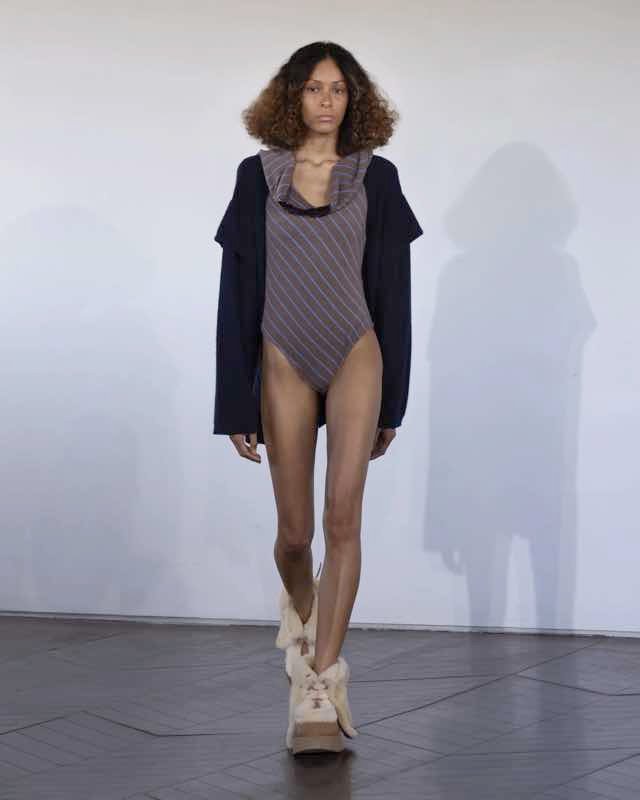
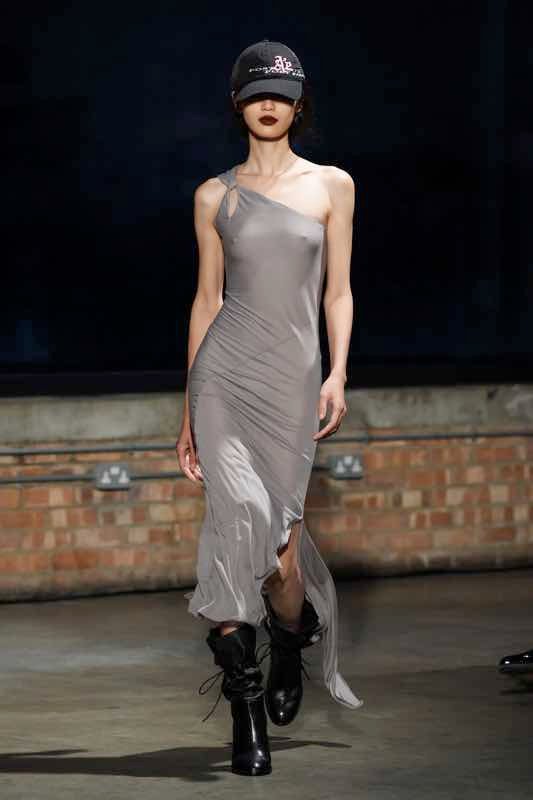
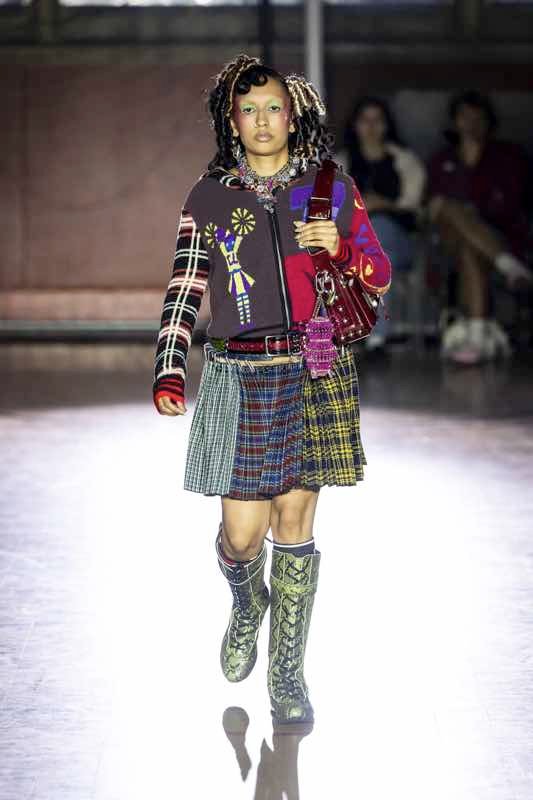
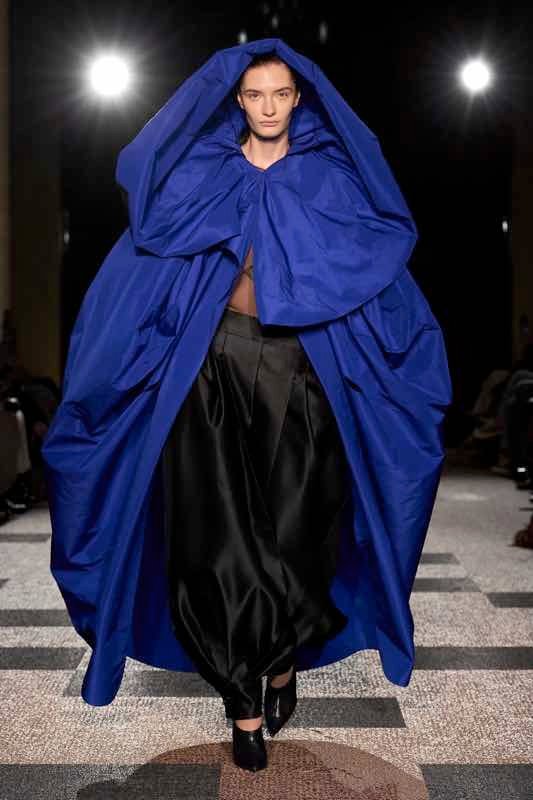
Talia Byre: intimacy stitched in stripes
In Vauxhall, Talia Byre (Talia Lipkin-Connor) turned the spotlight on intimacy, inspired by Deborah Levy’s Real Estate. Her clothes were presented as companions rather than costumes: striped rugby shirts, apron-style gowns, terry-cloth fabrics echoing interiors.
Her runway remained small—barely forty guests—but the emotional response was overwhelming. Embellished sweaters with beaded strings, millinery experiments like caps with elongated trains, and William Morris prints grounded the collection in a quiet eccentricity. “Past the craziness of your twenties,” Byre explained. The audience left convinced she had just delivered one of the week’s most poignant highlights.
Aaron Esh: London at its rawest
At Oval Space, a former Hoxton nightclub, Aaron Esh returned after a season’s pause with the electricity of an underground rave. Styled by Katy England, his models stormed the room in silhouettes merging 1930s couture finery with East End leather craft.
Bias-cut silk skirts floated over drainpipe leather trousers, Harrington jackets shimmered in satin, and double-faced suits were tailored by the craftsman who once made Esh’s father’s wedding suit. Accessories—black caps, heavy boots—grounded the looks in the streets of London.
The mood was unmistakably authentic. As Osman Ahmed observed: “The models looked as if they already owned the clothes. That’s London.”
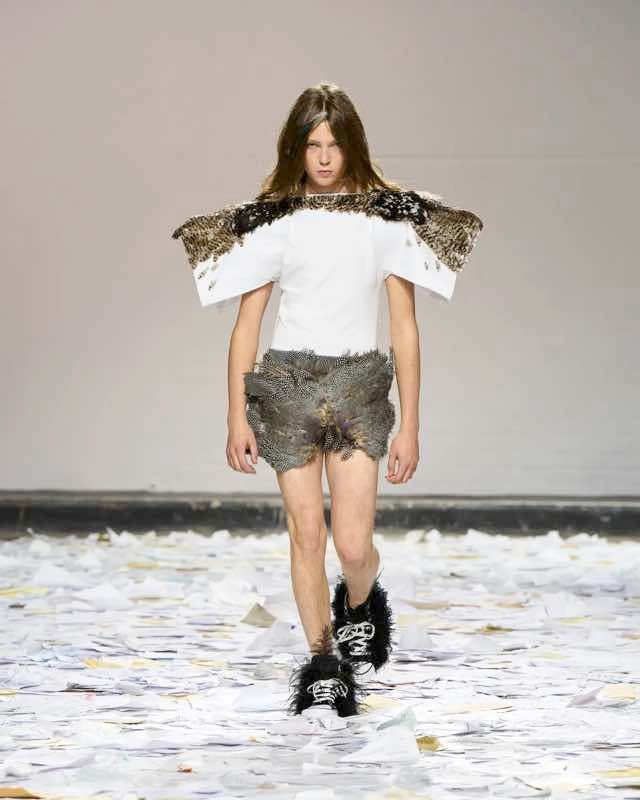
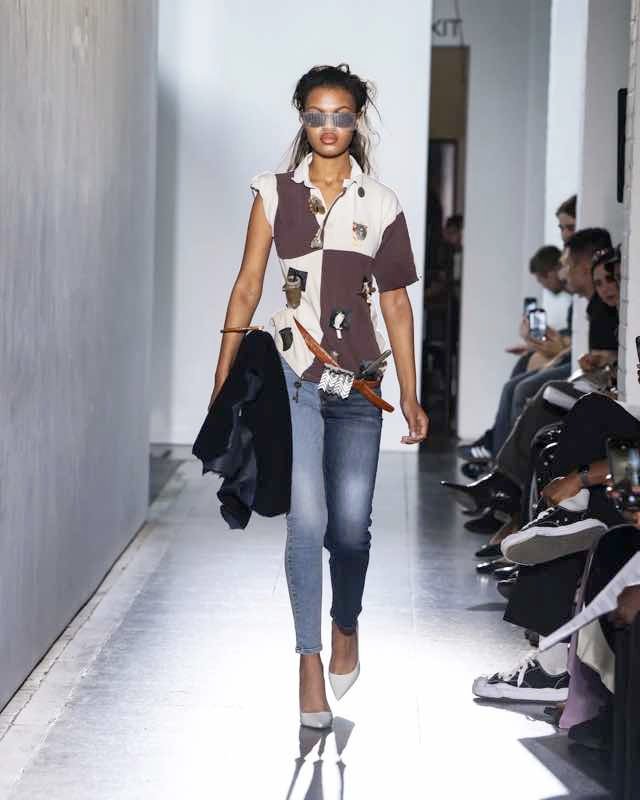
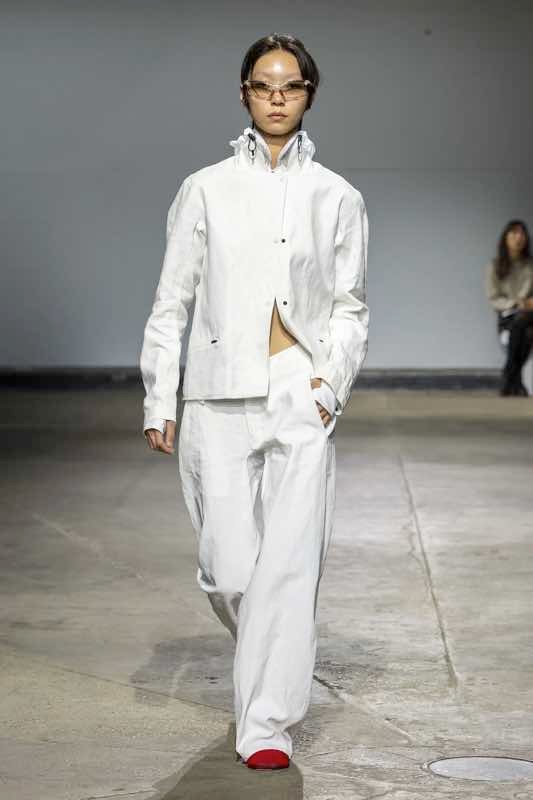
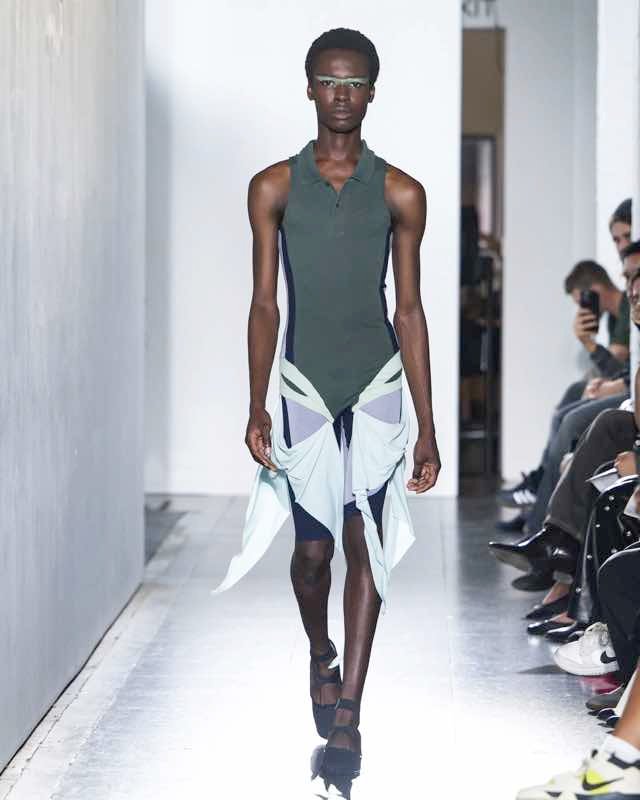
Roksanda: 20 years of sculptural femininity
Celebrating two decades in fashion, Roksanda Ilinčić staged her SS26 show in the ballroom of the Chancery Rosewood hotel. She revisited archive pieces like the Margot (SS12) and Anya (SS16), but also embraced new inspirations from Barbara Hepworth. Negative space, undulating forms, raffia fronds, and hazy silk prints captured landscapes around Hepworth Wakefield.
The result was a meditation on form, grace, and feminine strength—echoing Hepworth herself. Among the front-row supporters was Marina Abramović, proof that Roksanda’s clothes remain a uniform for London’s creative elite.
Chopova Lowena: cheerleaders for the outsiders
In a church-turned-gym, Emma Chopova and Laura Lowena reimagined American cheerleaders as gothic rebels. Their signature carabiner skirts clashed with football bras, pom-pom jackets, and track pants laced like boots.
The soundtrack—death metal mixed with cheer chants—set the manic pace. More than a show, it was a manifesto for individuality. “There is no I in team,” the duo reminded, “but there is in individuality.” London’s outsiders applauded in unison.
Fashion East: 25 years of radical energy
Lulu Kennedy’s incubator Fashion East marked its 25th anniversary with exhibitions and new debuts. Louis Mayhew’s Hard Graft collection, adorned with rusted keys and ceramics, carried the grit of London labor. Jacek Gleba offered sinuous bodysuits inspired by his dance background. Cameron Williams’ Nuba returned with draped jackets and feather-like tulle.
Fashion East once again proved it is not just an institution but a beating heart of LFW, where rawness and experimentation remain sacred.
Oscar Ouyang: knitwear takes flight
Among the Newgen talents, Oscar Ouyang made his runway debut. Inspired by messenger birds, his knitwear wove silk, Harris thread, and Donegal yarn into featherlight jumpers and honeycomb shorts. Feathers salvaged from the meat industry added surreal glamour.
Already stocked at Dover Street Market, Ouyang is rewriting the rules of knitwear, proving it can be as avant-garde as couture. His show floor, designed by Gary Card, was scattered with letters—an allegory of messages carried across time and culture.
Why this season mattered
London Fashion Week SS26 will be remembered not only for its names and collections but for its energy. It captured a city determined to protect its heritage while embracing disruption. Established pillars like Burberry and Roksanda reminded us of longevity, while Rocha, Alleyne, Esh, and Chopova Lowena reminded us that rebellion is still the city’s lifeblood.
Perhaps most importantly, the new generation—Ouyang, Byre, Parv—showed that London remains a launchpad for fearless visions. In the end, that balance between continuity and chaos is what makes London Fashion Week impossible to ignore.
